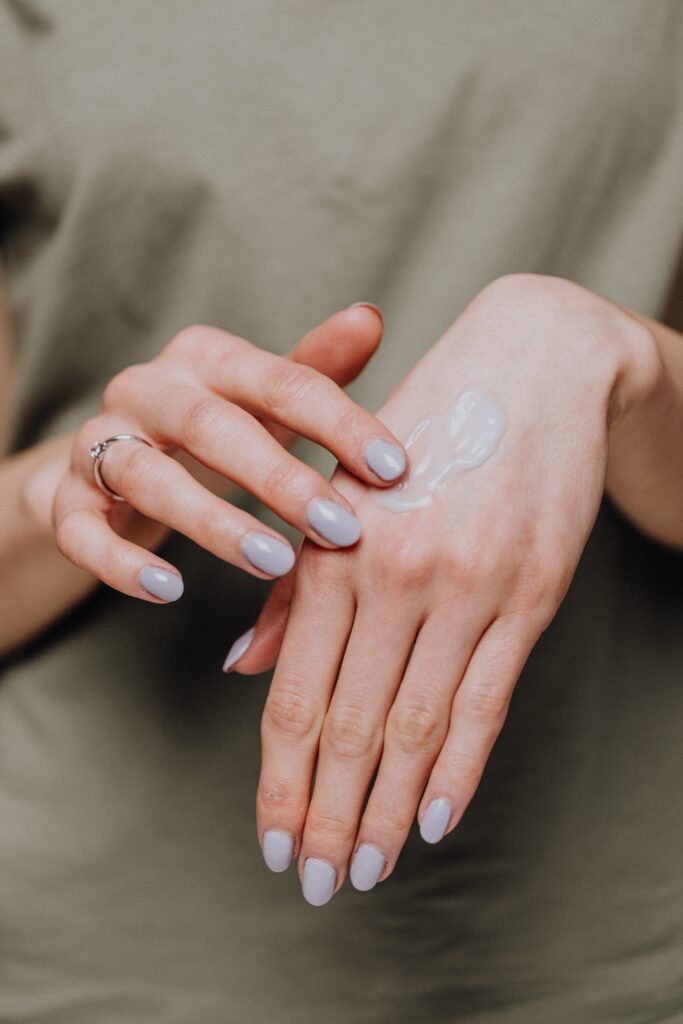Ever pay attention to how the seasons affect your skin’s appearance? If so, you may have noticed that your skin regularly appears drier and flakier during the colder winter months. In the winter, dry skin is a typical skin problem. Scaling, deficiencies in the water-holding and barrier functions, and lower levels of ceramide (CER) in the stratum corneum (SC) have all been linked to dry skin in the winter. Xerosis and xeroderma are other terms for dry skin.

Signs & Symptoms of Dry Skin
Dry skin is frequently transient or seasonal. The obvious signs and symptoms of dry skin might change depending on your age, health, skin tone, living situation, and sun exposure. They include a tightening sensation, rough skin that feels and appears, itching, mild to severe skin flaking and peeling, fine cracks or lines, skin that varies in color from reddish on white skin to greyish on brown and black skin, and deep cracks that could bleed.
How to Hydrate Dry Skin in Winter?

Dry winter skin is not always the issue.
By making some changes to your skincare routine, as well as using the right products or home remedies, you may be able to keep your skin looking soft, smooth, hydrated, and vibrant in winter.
Let’s take a deeper look at some advice that could improve your skin’s health during the winter season of the year.
Ceramide Cream Moisturizer
Topical treatments termed moisturizers are made to help prevent dry skin by enhancing and maintaining the skin barrier’s function.
According to one research, topical application of the Ceramide cream moisturizer results in more skin hydration and less Trans Epidermal Water Loss (TEWL), making it suited to aid in the recovery of xerotic or dry skin.
Ceramide cream promotes barrier function and skin hydration, making it potentially acceptable for use on dry skin.
Aloe Vera
The frequently utilized Aloe vera extracts, which have a composition rich in polysaccharides, may give the product moisturizing characteristics. Studies looked at how frequently aloe vera gel was used as a moisturizer to treat dry skin. According to studies, when compared to base cream alone, a hydrophilic cream including varying concentrations of freeze-dried aloe vera concentrate enhanced the water content in the stratum corneum due to the moisturizing actions of aloe vera.

Another study demonstrates the effectiveness of freeze-dried Aloe vera extract as a natural remedy for enhancing skin moisture. As a result, it can be added to the treatment of dry skin as well as in hydrating cosmetic compositions. Aloe vera extract has been a natural remedy for increasing skin moisture.
Aloe vera can be added to hydrating cosmetic formulas to help cure dry skin.
Coconut Oil

It has been discovered that coconut oil is good for the external part of the body such as hair and skin. For centuries, residents of the tropics have utilized coconut oil as a natural moisturizer.
Coconut oil has been used to treat a variety of skin conditions in Ayurvedic medicine, including microbial infections and wound healing.
Comparison research conducted to evaluate the therapeutic efficacy of virgin coconut oil as a moisturizer for mild to severe xerosis or dry skin revealed that coconut oil had a significant ability to hydrate the skin and enhanced the lipid levels on the skin’s surface. Coconut oil improved xerosis more than mineral oil, according to both the investigators’ and the patient’s visual analog scales.
Cucumber Extract (Cucumis sativus fruit extract) Scrub
Cucumber juice’s moisturizing, skin-tightening and anti-inflammatory qualities make it a useful moisturizer. By gently unclogging pores, it nourishes and softens the skin while also assisting in the removal of dirt, dead skin cells, and pollutants when used as a scrub.
Cucumber extract scrub keeps the skin hydrated, clear, healthy, and blemish-free.

Ghee
Ghee is a crucial component of the Ayurvedic medical system. It can kill a variety of bacteria because of its intense lipidic composition. For health advantages, it is used topically. It is applied as a massage oil in Asian nations. Ghee contains fatty acids that nourish and hydrate the skin to give it a healthy appearance, antioxidant vitamins A and E, and lipids that keep the skin’s moisture balanced. Massage all over the body with ghee. This enables the benefits of ghee to enter the deeper tissues immediately. The increased moisture content of ghee might be beneficial for hydrating skin.
Chapped lips could benefit from Ghee application. Also, ghee is a wonderful moisturizer for the face.
Home remedies to moisturize skin during the winter.
In the winter, it’s usual to have dry skin on your hands, feet, face, and other body parts.
Avoid prolonged contact with hot water, deodorant soap, and skin care products that contain alcohol, fragrance, retinoids, or alpha hydroxy acids if you want to keep your skin moisturized.
Use this home remedy to moisturize your skin during the winter. Additionally, to avoid dry skin, use a gentle cleanser, moisturize right away after bathing, showering, or washing your hands, use a humidifier, and wear gloves when going outside in cold weather.
Consider consulting your healthcare professional for further advice if you discover that home remedies aren’t helping your dry skin.






















